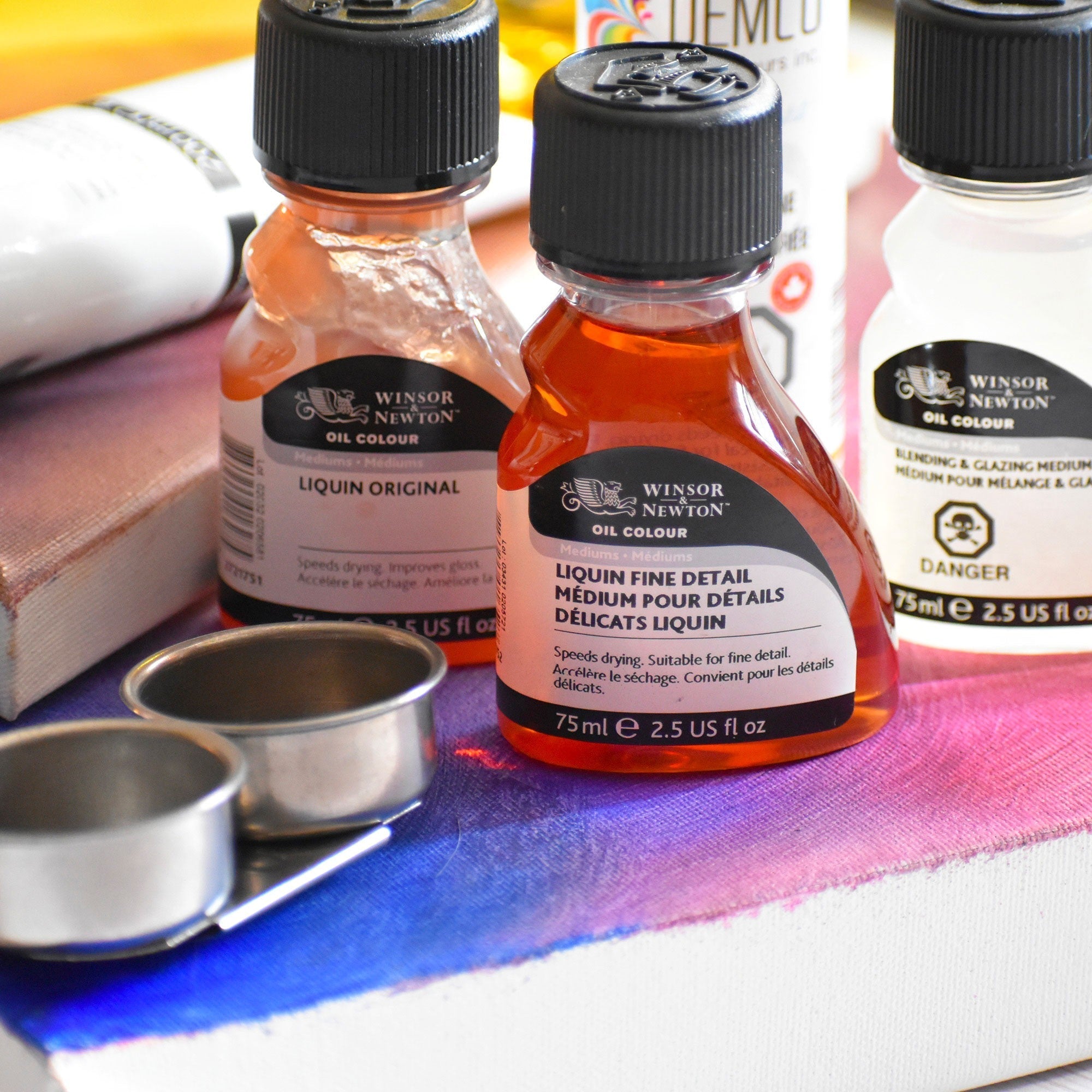Discover the different types of additives and mediums that make oil painting easier. Additives and mediums serve to alter the consistency of the paint (making it thinner or thicker), the finish or the drying time.
There are different types of oil paint additives: oils, solvents, mediums and other types of products (such as siccatives, wax or mastic to create different effects).
OILS :
Oils are used as a binder in oil paints. When dry, the oil forms a solid insoluble film. The different oils are vegetable oils, but they are not all siccative (i.e., hardening by oxidation).
1.Linseed oil
Is frequently used as a medium for oil painting. It is the basis of most colours that are sold in tubes. This oil is the most siccative (dries the fastest). It offers good transparency and gives colours a glossy finish. However, in addition to being dark in its liquid state, linseed oil tends to yellow. It should be avoided with whites or pale colours.
Clarified or purified linseed oil is bleached linseed oil. It has the same properties as regular linseed oil, but with a less pronounced colour. The clarification or purification process removes impurities from the oil. Clarified linseed oil is the most quick-drying of the oils.
Tip: Linseed oil yellows over time, and more quickly in the dark. To prevent yellowing, it is recommended to leave your artwork and oil bottles in natural light.
2- Polymerized linseed oil (stand oil, standolie or Old Holland oil)
Is boiled linseed oil. It has the consistency of honey. Diluted, it is used for glazes and in the composition of several mediums. It dries slowly, but the film becomes solid and resistant. It doesn't yellow like raw linseed oil.
3- Poppyseed oil
Is paler than linseed oil and does not yellow. It dries much more slowly but remains fragile and may crack over time. Most blue-coloured oils are made with poppyseed oil.
4- Safflower oil
Is pale. It fluidifies colours, gives gloss to paint films and does not yellow. It dries slower than linseed oil. It is often used in manufacturing light colours.
MEDIUMS :
Painting mediums are made from oils, solvents and resins. Quick-drying formulas include a small quantity of siccatives which speed up the paint’s drying time. These mediums can be used in desired proportions without fear of adverse reactions from the paint layer.
1-Painting mediums
Make the colour more fluid, while enhancing brilliance. Depending on the type of medium, it can slow down drying time and does not yellow. It can be used for glazes.
2- Quick-drying medium
Improves the fluidity and drying speed of oil colours. It allows for faster layering and resists yellowing.
3- Venetian turpentine
Used alone or mixed with regular turpentine, creates a hard, glossy coat of paint similar to enamel. It is ideal as a medium for glazes and can also be added to homemade varnish as a plasticizer.
4- Cold wax medium
Does not contain oil. The paint surface made from wax mediums will have a hardness of beeswax candle. It can be applied as a waxed varnish over a dry oil painting.
5- Paste mediums
Give body to the painting and help create textures and impasto. Their main ingredients are waxes, sealants or gels. Impasto mediums allow for more paint to be applied in generous coats in an economical manner.
OTHER TYPES OF ADDITIVES :
1-Courtrai siccative
Is considered the most powerful drying agent and allows thick coats to harden evenly.
2- Winsor & Newton Liquin
Is a medium that resists yellowing, dries quickly and provides great transparency to colours. It is based on alkyd resin. It can be used as a medium at all painting stages and is ideal for glazes. Liquins are available in fluid, gel or paste form.








